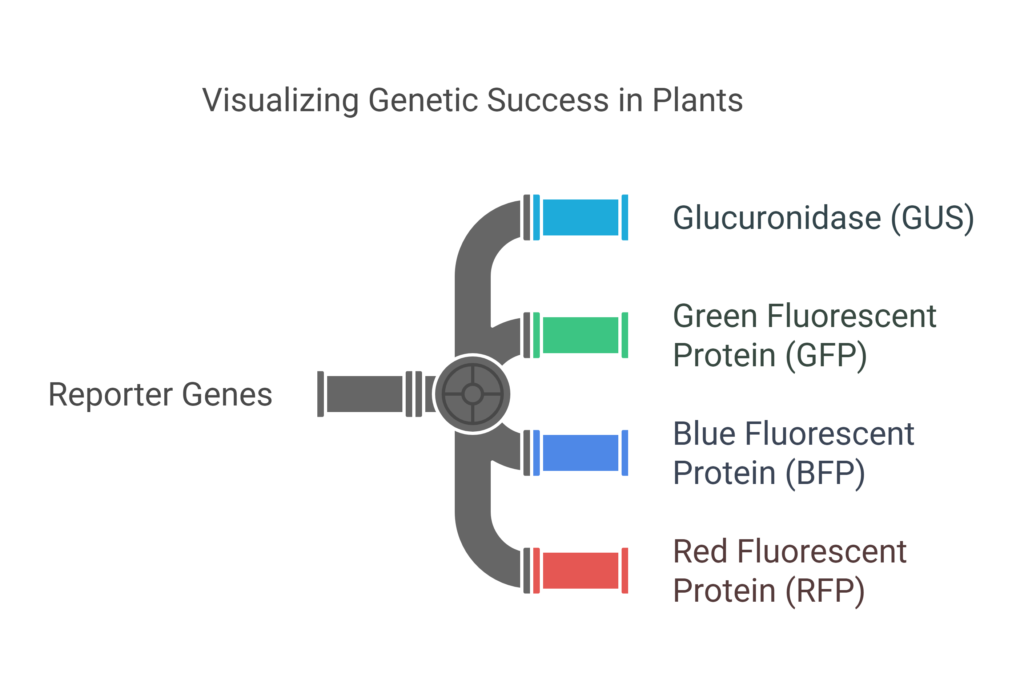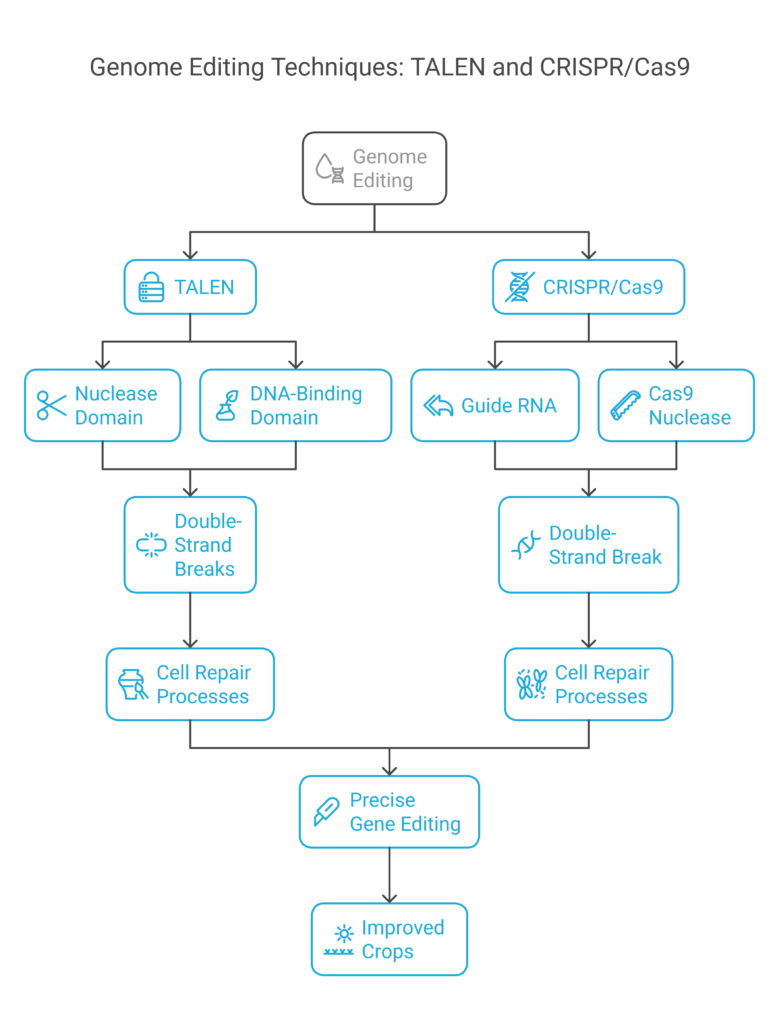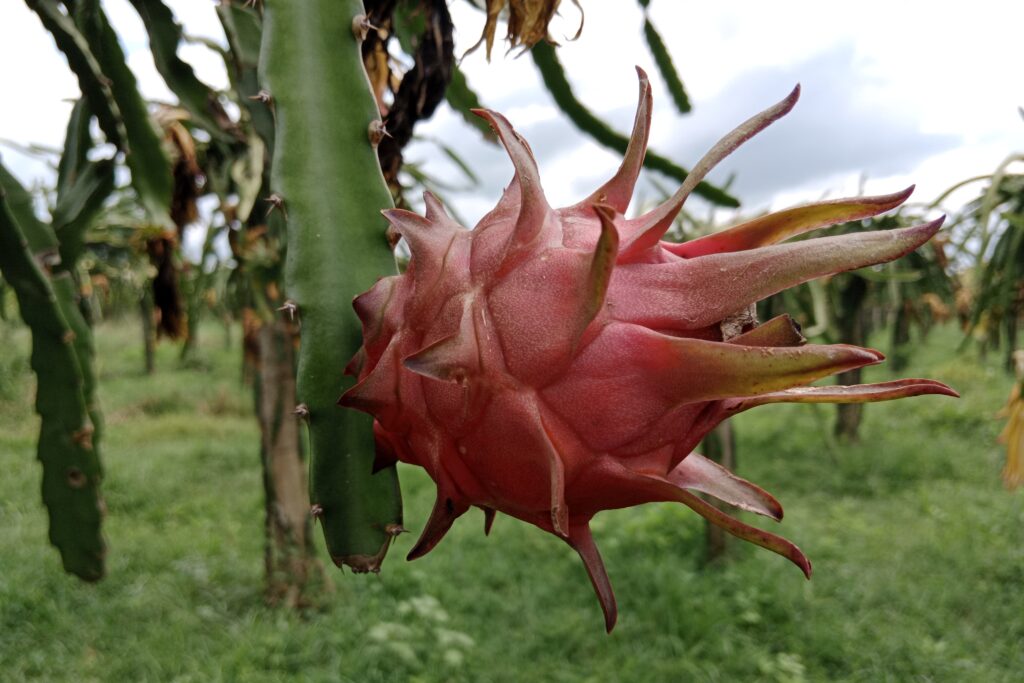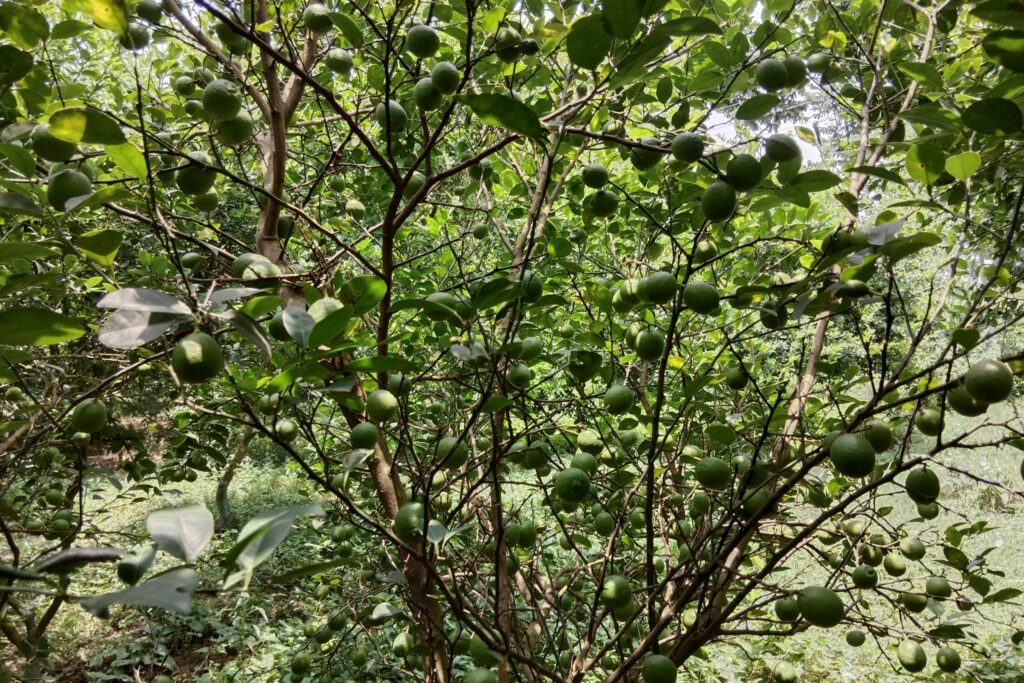Reporter Genes and Plant Transformation
Plant transformation is a fundamental aspect of modern agricultural biotechnology, allowing scientists to incorporate new traits into plants, such as enhanced yields, pest resistance, and tolerance to environmental stress. A crucial component of this process is the use of reporter genes, which enable researchers to confirm and visualize successful genetic modifications.
These genes are integral to plant transformation, offering a clear and measurable way to monitor the effectiveness of genetic engineering. This blog delves into the significance of reporter genes and plant transformation, examines various transformation techniques, and highlights cutting-edge technologies like CRISPR/Cas9 and TALENs that are revolutionizing plant genome editing. Understanding the synergy between reporter genes and plant transformation provides valuable insights into how these tools are shaping the future of agriculture.
Reporter Genes in Plant Transformation
Reporter genes are used to monitor the success of genetic transformations. They produce easily detectable signals, allowing researchers to confirm that the desired genetic material has been successfully incorporated into the plant genome. Some of the most commonly used reporter genes include:

a). Glucuronidase (GUS)
Glucuronidase (GUS) is a widely used reporter gene in plant transformation studies due to its ability to produce a distinct blue color when exposed to a specific substrate, such as X-Gluc (5-bromo-4-chloro-3-indolyl β-D-glucuronide). This enzymatic reaction is highly specific and provides a reliable visual marker to identify transformed tissues. The GUS reporter system is particularly advantageous because of its ease of use, high sensitivity, and versatility in various plant species.
Researchers can visually assess the success of genetic transformation by observing the blue coloration, which indicates the presence and activity of the introduced GUS gene. This makes GUS an invaluable tool for studying gene expression patterns, promoter activity, and the spatial and temporal regulation of transgenes in plants.
b). Green Fluorescent Protein (GFP)
When exposed to ultraviolet or blue light, the flexible and popular reporter gene known as Green Fluorescent Protein (GFP) emits green light, enabling real-time gene expression monitoring without the use of damaging tests. Because it allows for live imaging of gene activity, GFP—which was first isolated from the jellyfish Aequorea victoria—has emerged as a key component in molecular biology and plant transformation.
Applications for it include viewing tissue-specific gene expression in plants, tracking protein localization, and researching biological processes. Because of its brilliant and steady fluorescence and non-invasive nature, GFP is a vital tool for furthering research in plant biotechnology and other fields.
c). Blue Fluorescent Protein (BFP)
Blue Fluorescent Protein (BFP) is a variant of the Green Fluorescent Protein (GFP) that emits blue light when exposed to ultraviolet or near-UV light. Like GFP, BFP is used as a reporter gene to visualize and monitor gene expression in real time, but its distinct blue fluorescence makes it particularly useful for multi-color imaging experiments.
By using BFP in combination with other fluorescent proteins, such as GFP or RFP, researchers can simultaneously track multiple genes or cellular processes within the same organism or tissue. This capability enhances the ability to study complex biological interactions and gene expression patterns. BFP’s unique spectral properties make it a valuable tool in plant transformation and molecular biology, enabling more detailed and comprehensive analyses.
d). Red Fluorescent Protein (RFP)
Red Fluorescent Protein (RFP) is a powerful reporter gene that emits red light when exposed to specific wavelengths of light, making it ideal for deep tissue imaging due to its ability to penetrate thicker biological samples more effectively than shorter-wavelength fluorescent proteins like GFP or BFP. RFP is widely used in plant transformation and molecular biology for tracking gene expression, protein localization, and cellular processes in real time.
Its distinct red fluorescence also makes it highly suitable for co-expression studies with other fluorescent proteins, allowing researchers to simultaneously monitor multiple genes or pathways within the same organism or tissue. This versatility and its superior tissue penetration make RFP an essential tool for advanced imaging and genetic research.
For example, GUS staining is often used to visualize gene expression in Arabidopsis cotyledons, while co-infection with differently marked viruses allows researchers to study multiple genes simultaneously.
Methods of Plant Transformation
Transforming plant cells involves introducing foreign DNA into the plant genome. Several methods are commonly used, each with its own advantages and limitations:

a). Fusion of Liposomes
Fusion of Liposomes is a plant transformation technique where liposomes, which are small, spherical vesicles made of lipid bilayers, are used to encapsulate DNA. These DNA-loaded liposomes are then fused with the membranes of plant cells, facilitating the delivery of genetic material into the cells. This method leverages the natural ability of liposomes to merge with cell membranes, making it a non-invasive and efficient way to introduce foreign DNA.
The fusion of liposomes is particularly useful for delivering genes into protoplasts (plant cells without cell walls) and is valued for its simplicity and ability to minimize cell damage. This technique is a key tool in plant biotechnology for studying gene function and developing genetically modified plants.
b). Microinjection
Using a tiny glass needle and microscopic supervision, DNA is directly injected into plant cells in the very accurate plant transformation procedure known as microinjection. This technique is perfect for studies that need great accuracy, including single-cell analysis or the transformation of big cells like protoplasts, because it enables the targeted delivery of genetic material into particular cells or cellular compartments.
However, microinjection is only useful for small-scale studies or particular research applications due to its labor-intensive nature and need for specialized equipment and trained operators. Because it can accomplish precise genetic alterations with little off-target effects, microinjection is still a useful tool in plant biotechnology despite its difficulties.
c). Electroporation
DNA can enter cells through a process called electroporation, which employs an electric field to temporarily puncture the cell membrane. This technique works especially well for transferring genetic material into cells with weak walls or protoplasts, which are plant cells without cell walls. The cell membrane becomes momentarily permeable when a short electrical pulse is applied, enabling foreign DNA to flow through. Because of its effectiveness and capacity to change many cells at once, electroporation is a common method for genetic research and the creation of transgenic plants. The method works best for cells that can tolerate the strain of the electric pulse, however it is important to optimize the electrical settings to prevent cell damage.
d). Particle Bombardment (Biolistic Method):
Particle bombardment, also referred to as the biolistic method, is a highly adaptable and widely utilized technique for delivering DNA into plant cells, particularly in species or tissues that are difficult to transform using other methods like Agrobacterium-mediated transformation.
This approach involves coating microscopic particles, usually made of gold or tungsten, with DNA and then accelerating them into plant cells at high speeds using a gene gun. Once inside the cells, the DNA integrates into the plant genome, allowing the introduced gene to be expressed.
A key advantage of particle bombardment is its applicability to a wide variety of plant species, including monocots and hard-to-transform plants, as well as diverse tissues such as embryos, calluses, and leaves. This technique has been instrumental in overcoming barriers in genetic engineering, making it possible to modify plants that were once considered untransformable.
e). Rhizobium radiobacter (formerly Agrobacterium tumefaciens)
Because of its exceptional capacity to transfer DNA into plant cells, the naturally occurring soil bacterium Rhizobium radiobacter (previously known as Agrobacterium tumefaciens) has emerged as a key player in plant genetic transformation.
This procedure makes use of the bacterium’s innate mechanism, in which a portion of its Ti (tumor-inducing) plasmid integrates into the plant genome and causes the injected genes to be expressed. By altering the Ti plasmid to transfer desired genetic information without causing illness, scientists have taken use of this method.
Although improvements have expanded its application to monocots, this technique is extremely accurate, efficient, and especially useful for dicotyledonous plants. R. radiobacter is a favored tool for producing genetically engineered plants with characteristics including increased yield, insect resistance, and stress tolerance because of its adaptability and dependability.
Particle Bombardment: The Gene Gun Technique
Particle bombardment, also known as biolistic particle bombardment, is a powerful method for introducing foreign DNA into cells, especially in organisms that are not easily transformed by other methods like Agrobacterium-mediated transformation. Here’s how it works:
a). Gene Gun
The gene gun is a device used in the biolistic method to deliver DNA into plant cells by shooting microscopic particles, typically made of gold or tungsten, that are coated with DNA. This tool accelerates the DNA-coated particles at high speeds, enabling them to penetrate the cell walls and membranes of target plant tissues. Once inside, the DNA can integrate into the plant genome, allowing for the expression of the introduced gene. The gene gun is particularly useful for transforming species or tissues that are resistant to other methods, such as Agrobacterium-mediated transformation, making it a versatile and essential tool in plant biotechnology and genetic engineering.
b). DNA-coated Particles
DNA-coated particles, typically made of tungsten or gold, are used in genetic transformation methods such as particle bombardment. These tiny particles are coated with the desired DNA and propelled into plant cells at high velocity using a gene gun. Once inside the cells, the DNA can integrate into the plant genome, enabling the expression of the introduced genes. This technique is particularly useful for transforming plants and tissues that are resistant to other methods, offering a versatile approach for genetic engineering in a wide range of plant species.
c). Biolistic Acceleration
Biolistic acceleration is the process of propelling microscopic DNA-coated particles, typically made of gold or tungsten, at high speeds to deliver genetic material into plant cells. This acceleration is achieved using various methods, such as a gunpowder charge, high-pressure helium gas, or an electrostatic charge, which provide the force needed to penetrate the cell walls and membranes.
Once inside, the DNA can integrate into the plant genome, enabling gene expression. This technique is a key component of the biolistic method, allowing for the transformation of a wide range of plant species and tissues that are otherwise difficult to modify using traditional methods.
d). Particle Penetration
Particle penetration is the critical step in the biolistic method where DNA-coated particles, accelerated to high speeds, breach the cell walls and membranes of plant tissues. This process allows the genetic material to enter the cells, where it can integrate into the plant genome and enable the expression of the introduced gene. The ability of these particles to penetrate tough cell walls makes this technique particularly effective for transforming a wide range of plant species and tissues, including those that are resistant to other transformation methods. Particle penetration is a key factor in the success of biolistic transformation, facilitating the delivery of DNA into otherwise hard-to-modify cells.
e). Incorporation of DNA
Once the DNA enters the plant cell, it can integrate into the host genome through natural repair mechanisms. This incorporation allows the introduced genes to be stably expressed, enabling the development of new traits such as improved yield, stress tolerance, or pest resistance. The stable integration ensures that the traits can be inherited by subsequent generations, making this a key step in creating genetically modified plants.
This method is particularly useful for organisms that are not susceptible to Agrobacterium and is widely used in plant biotechnology.
Modifying Plant Genomes: From Classical Breeding to Genome Editing
Modifying plant genomes is essential for improving crop traits. Here are the main methods used:

Classical Breeding
Classical Breeding is one of the oldest and most fundamental methods of improving plant traits. It involves selectively crossing plants that possess desirable characteristics, such as higher yield, disease resistance, or better nutritional quality, to produce offspring with enhanced traits. This method relies on natural genetic variation and does not involve direct manipulation of DNA, making it a traditional and widely accepted approach in agriculture.
The process of classical breeding typically involves three key steps:
a). Selection
Identifying and choosing parent plants that exhibit the desired traits.
b). Crossing
Pollinating the selected plants to combine their genetic material, creating offspring with a mix of traits from both parents.
c). Selection of Offspring
Evaluating the offspring and propagating those that display the desired improvements.
While classical breeding is time-consuming and may introduce unwanted traits along with the desired ones, it has been successfully used for thousands of years to develop crops with improved characteristics, laying the foundation for modern agricultural practices.
Genetic Engineering
The direct alteration of an organism’s genetic makeup by sophisticated biotechnology methods is known as genetic engineering. Through this method, scientists can modify or add particular traits that enhance an organism’s qualities, such increased nutritional value, pest resistance, or tolerance to environmental stressors. Genetic engineering is frequently employed in agriculture to create enhanced crop types with increased quality, resilience, and yield. This can be done through:
a). Transgenesis
Transgenesis is a genetic engineering approach that includes inserting genes from an unrelated species into a plant’s genome. Through this technique, beneficial traits that would not emerge naturally through traditional breeding can be passed on. A bacterial gene, for instance, can be inserted into a plant to give it resistance to insects or disease. Examples of transgenic crops that have significantly raised agricultural output and reduced the need for chemical pesticides are pest-resistant cotton and herbicide-tolerant soybeans.
b). Cisgenesis
Cisgenesis involves the transfer of genes between closely related species or within the same species. This method is often viewed as a more natural form of genetic modification since it mimics conventional breeding processes. Cisgenic plants retain traits from compatible species without introducing foreign genetic material. For example, transferring a disease-resistant gene from one apple variety to another can enhance resistance while maintaining the plant’s original characteristics. This approach is considered safer and more acceptable to consumers compared to transgenesis.
Genome Editing Technique
Modern technology called genome editing allows for exact changes to an organism’s DNA, providing previously unheard-of control over hereditary characteristics. Genome editing is a valuable technique for investigating gene function, creating disease-resistant plants, and improving crops since it enables scientists to make targeted alterations to specific genes, unlike traditional breeding or genetic engineering. Two of the most well-known methods for editing genomes are CRISPR/Cas9 and TALEN.

a). TALEN
A genome-editing technology called TALEN (Transcription Activator-Like Effector Nucleases) uses proteins that have been created to cleave DNA at particular sites. The two primary parts of TALENs are a nuclease domain that initiates double-strand breaks at the target location and a DNA-binding domain that identifies and attaches to a particular DNA sequence. The cell’s natural repair processes are triggered by these breaks, allowing for precise gene editing, including insertions, deletions, and changes. Because of their high specificity, TALENs have been effectively applied to a variety of organisms, including plants, to investigate gene function and create better features.
b). CRISPR/Cas9
CRISPR/Cas9 is a revolutionary genome-editing system that has transformed the field of molecular biology. It uses a guide RNA (gRNA) to direct the Cas9 nuclease to a specific DNA sequence, where it introduces a double-strand break. This break can be repaired by the cell’s natural repair pathways, allowing for targeted gene knockouts, insertions, or modifications. CRISPR/Cas9 is highly efficient, versatile, and relatively easy to use compared to other genome-editing tools. It has become the go-to method for researchers working on crop improvement, disease resistance, and functional genomics.
Plant biotechnology has been transformed by TALEN and CRISPR/Cas9, which allow for precise and targeted genomic changes. Through the development of crops with increased nutritional value, pest and disease resistance, and yield, these instruments are assisting scientists in creating a more sustainable and food-secure future.
CRISPR/Cas9: A Game-Changer in Genome Editing
The CRISPR/Cas9 system has transformed the field of genome editing due to its simplicity and efficiency. Here’s how it works:
a). Components
The CRISPR-Cas9 system consists of three key components that work together to modify DNA with precision. The first component is the Cas9 protein, which acts as a nuclease responsible for cutting the DNA at specific locations. This protein is guided to its target by the second component, the guide RNA (gRNA), which is a specially designed RNA sequence that matches the DNA region to be edited.
The gRNA ensures that the Cas9 protein binds to the correct location on the genome. The third component is the PAM sequence (Protospacer Adjacent Motif), a short, specific DNA sequence required for Cas9 to recognize and cut the target DNA. Without the presence of the PAM sequence, Cas9 cannot bind to or cleave the DNA. Together, these components enable precise genetic modifications, making the CRISPR-Cas9 system a powerful tool in genetic engineering.
b). Mechanism
The guide RNA (gRNA) directs the Cas9 nuclease to a particular target DNA sequence, where it causes a double-strand break (DSB), as part of the CRISPR/Cas9 process. After the break occurs, the cell fixes it through one of two main processes: homology-directed repair (HDR), which employs a template to introduce precise changes or insert new sequences, or non-homologous end joining (NHEJ), which frequently results in tiny insertions or deletions (indels) that can disrupt the target gene. CRISPR/Cas9 is a potent technique for accurate genome editing in plants and other species because it enables targeted gene knockouts, insertions, or alterations.
c). Applications:
CRISPR/Cas9 has a wide range of revolutionary uses, especially in plant biotechnology. It makes targeted gene knockout possible, in which particular genes are mutated to investigate their function or produce mutations that cause loss of function. Furthermore, CRISPR/Cas9 enables accurate gene editing, including the correction of mutations or the modification of preexisting genes to enhance agricultural characteristics like yield, stress tolerance, and disease resistance.
Additionally, it makes gene insertion easier, which is the process of adding new genes to specific regions of the genome to improve already existing features or add new ones. Because of these uses, CRISPR/Cas9 is a flexible tool for promoting agricultural research and creating genetically modified crops.
Conclusion
The use of reporter genes, complex transformation methods, and cutting-edge genome editing technologies like CRISPR/Cas9 and TALENs is revolutionizing plant biotechnology. These methods allow scientists to produce crops that are more nutritious, have better yields, and are resistant to diseases and pests. As research progresses, these technologies will become increasingly important in addressing global food security challenges.
Whether you are a student, researcher, or simply interested in the science behind plant transformation, it is imperative that you comprehend these methods and tools in order to embrace the future of agriculture.


